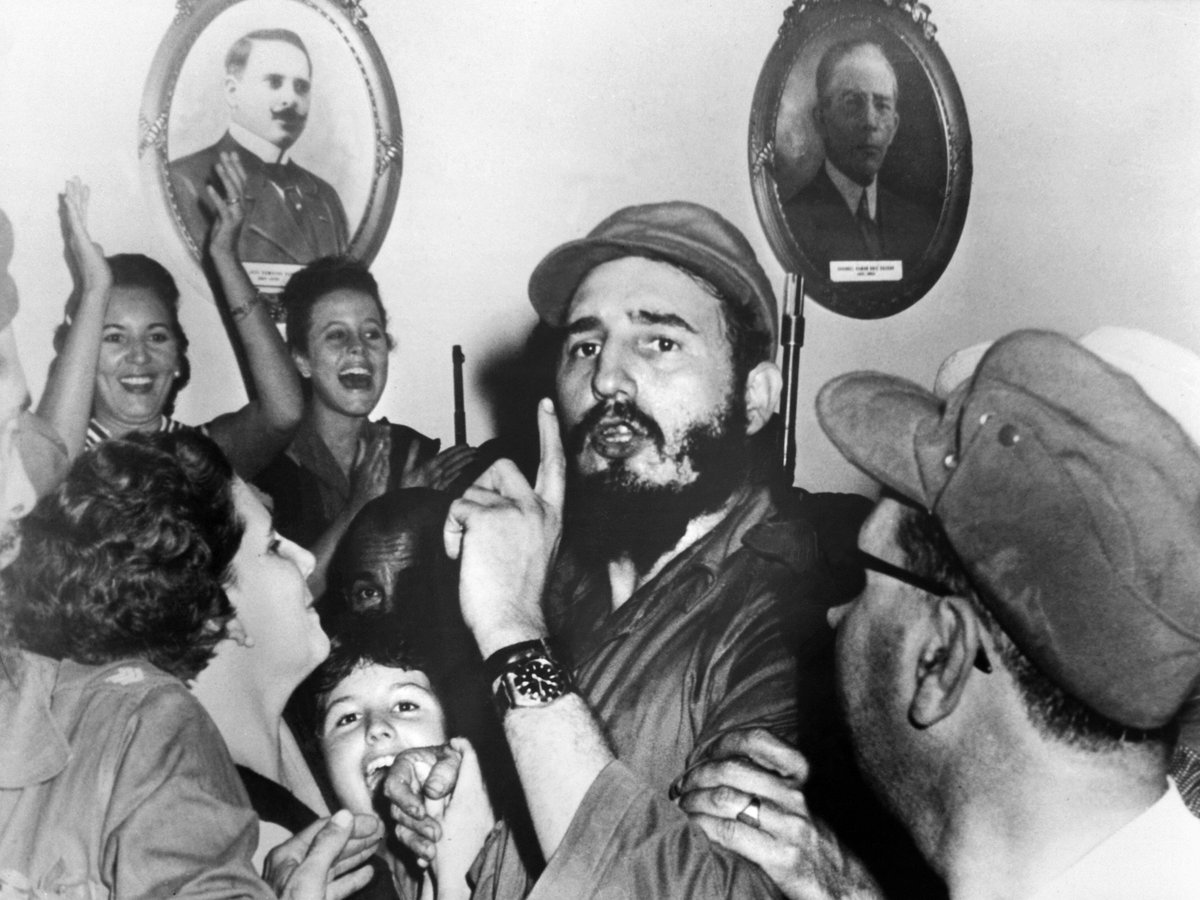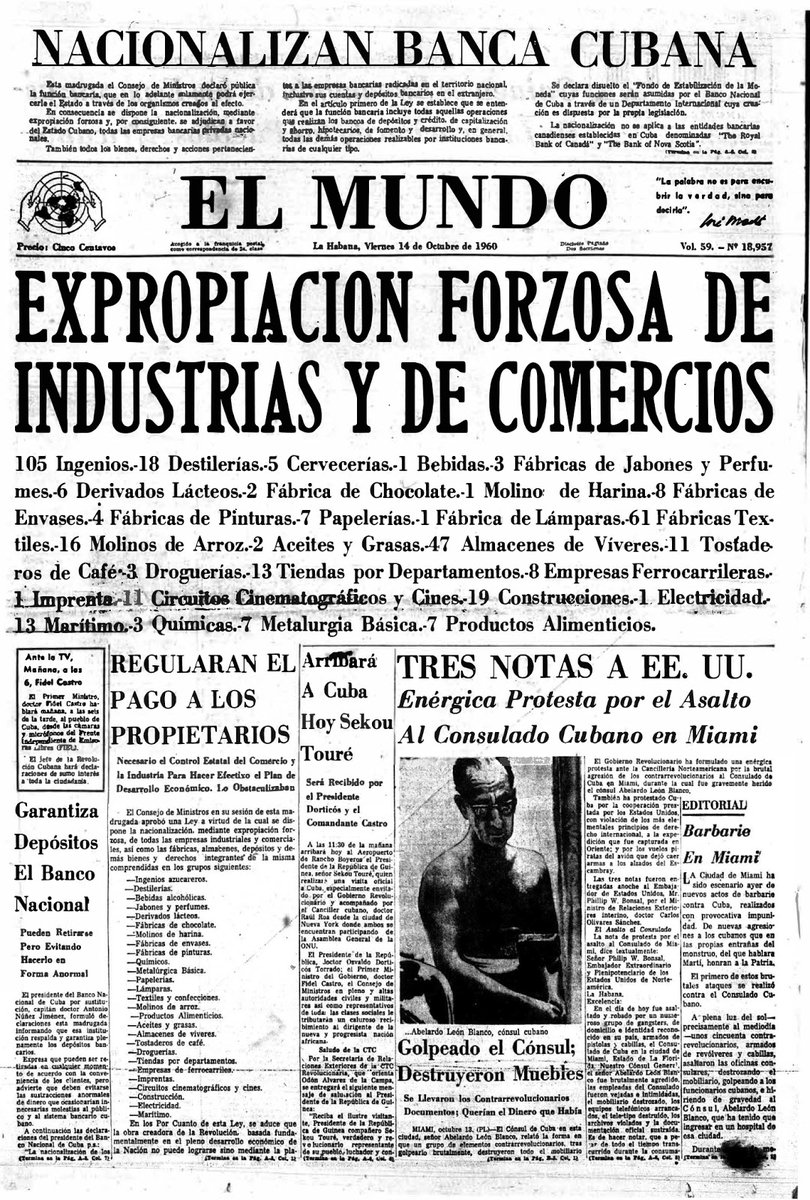When he took power in 1959, Fidel Castro denied he was a communist, but he soon began the most ambitious nationalization process in Latin American history. (THREAD)
In just nine years, Castro confiscated and nationalized all private property, until not even a single street vendor was left.
And the revolutionary government was so proud that it published several lists naming those it deemed “enemies of the people.” https://www.miamiherald.com/news/nation-world/world/americas/cuba/article246309300.html">https://www.miamiherald.com/news/nati...
And the revolutionary government was so proud that it published several lists naming those it deemed “enemies of the people.” https://www.miamiherald.com/news/nation-world/world/americas/cuba/article246309300.html">https://www.miamiherald.com/news/nati...
Six decades later, those lists may come back to haunt the Cuban government, serving as evidence in U.S. courts of the extensive confiscation process carried out by Castro.
Thanks to a surprising decision by President Donald Trump in May 2019, owners of property seized by the Cuban government can now demand compensation from companies in Cuba “trafficking in stolen property.”
But given the uncertainty about the results of the next presidential election, there may be little time left to file a Title III lawsuit.
Democratic nominee Joe Biden has not disclosed his position on this issue, but he has vowed to reverse some of Trump’s Cuba policies.
Democratic nominee Joe Biden has not disclosed his position on this issue, but he has vowed to reverse some of Trump’s Cuba policies.
In June 1960, the Cuban newspaper El Mundo published a list of almost 1,500 people whose assets had been confiscated by the newly created Ministry for the Recovery of Stolen Property.
The list, obtained by @elnuevoherald, is a rare document in which the Cuban government admits to having carried out the expropriations, and it includes the names of those affected.
Currently, the Cuban government restricts access to this type of historical document.
Currently, the Cuban government restricts access to this type of historical document.
El Mundo also published a second list with 261 names of people and companies — most of them in real estate, construction, investment, and media — whose assets were also intervened or confiscated.
These lists are now available in a searchable database, exclusively for subscribers to the @MiamiHerald and @elnuevoherald. https://www.miamiherald.com/news/nation-world/world/americas/cuba/article246309300.html">https://www.miamiherald.com/news/nati...
If you’re not currently a subscriber, please consider supporting local journalism by subscribing to the @MiamiHerald today: https://account.miamiherald.com/subscribe/create?param=f3NFDkY=&offer=NmEfaxcUb3lSCUJAfRIzcktLBwsydCggFxpAG15QPgoUG0hQeHNEDkRGb29STx0HLisVS1BIbw45eEtLHRRCdD1DeHpJGw8%3D&cid=soc_twitter_covid-news-noragameztorres-.99-2mo-15.99_202004">https://account.miamiherald.com/subscribe...

 Read on Twitter
Read on Twitter




